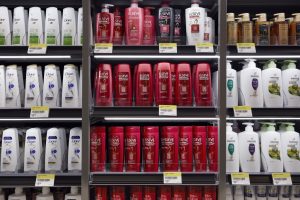Minimizing out-of-stocks with BOPIS and click-and-collect
The pandemic’s direct impact on consumer behavior has resulted in a variety of changes in how people shop and the options retailers provide, including a rapid increase in online shopping and omnichannel capabilities. Buy online, pick up in-store (BOPIS) is just one example of a feature that has become widely popular as a convenient way to make everyday purchases. That said, online features like click and collect can often result in depleted store shelves, leading to online and in-store customer dissatisfaction.
For retailers, customers’ high expectations and demand can lead to supply chain disruption, out-of-stocks and, ultimately, lost business. To keep customers satisfied and improve shelf space utilization, retailers should improve their shelf visibility processes.
Brand loyalty
Brand loyalty may be a thing of the past, as out-of-stocks caused by the pandemic have led customers to focus more on what’s directly available on the shelves. Out-of-stocks can be detrimental to brands trying to keep up with consumer demand, both in-store and online. When customers order an item from their preferred brand and it turns out to not be available at pickup, brands risk losing sales and that customer to their competitors.
For example, say a family has been purchasing the same brand of cereal for the last several years. When Covid-19 hit, they decided to use their local grocery store’s BOPIS option, where they added their preferred cereal brand to their online basket. Unfortunately, the cereal they purchased turned out to be out of stock and the store replaced it with an alternative from a competing brand, which the family realized they actually preferred. The impact from this out-of-stock item could lead to a long-term purchasing shift that negatively impacts the brand.
The increased popularity of BOPIS affects shelf availability significantly because current methods of inventory management often cannot keep up with demand, resulting in a disconnect between what the online platform says is available and what is actually on the shelf. To avoid brands losing customers because their product isn’t available, retailers and brands should make sure they have visibility into what is on the shelf and in the back room.
Space as the main lever to drive sales

Item availability has always been critical, but with the incremental and unpredictable demand that has come with the pandemic, it is important that brands maintain the right amount of space right on the shelf.
When brands and retailers have access to real-time, consistent data that provides an in-depth look at how products are performing on the shelf on a regular basis, they can make the necessary changes to restock popular items and keep them available to customers.
The bottom line
Click-and-collect features like BOPIS have increased in popularity due to the Covid-19 crisis, and the movement of items on shelves is so rapid and unpredictable that data on out-of-stock items or share of shelf can become obsolete far too quickly. There are many ways retailers can tackle this problem. One option is to hire a third-party merchandiser (Premium and Customer Impact are two examples), ideally one that uses technology to document in-store activity in real time and can manage out-of-stocks before they become a problem. Additionally, retailers can choose to streamline product assortments to better manage their supply chains.
Another option is to use autonomous shelf monitoring (offered by companies like mine, Simbe and GBL Robotics), which allows retailers to discover insights that are hard to uncover using just store delivery data or sales data – such as the duration each out-of-stock instance persists on the shelf and the resulting sales loss. Retailers can use these three strategies to make smarter decisions when it comes to inventory and shelf space management to keep both online and in-store shoppers satisfied.
Overall, to maintain customer satisfaction, brands and retailers need a solution that delivers high-quality, targeted execution and allows them to make smarter decisions.
This article first appeared on Forbes.



